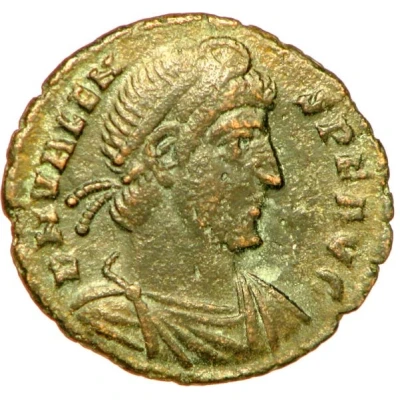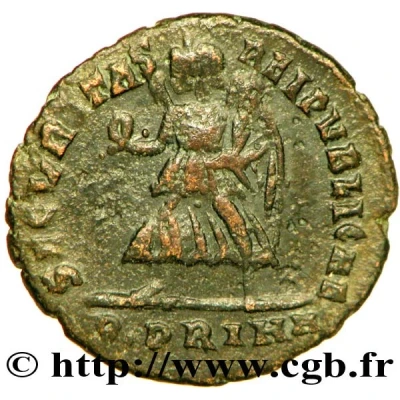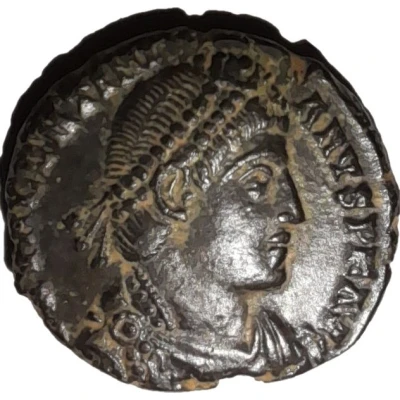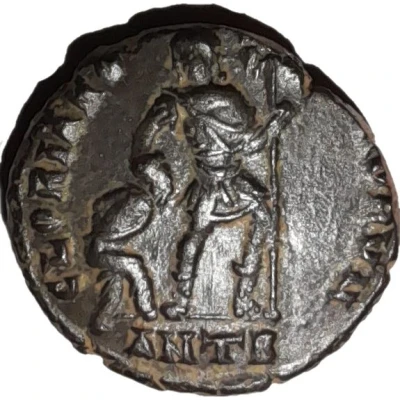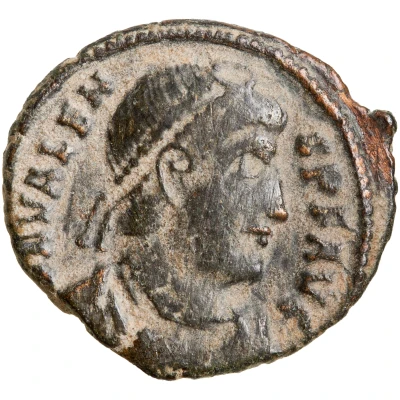
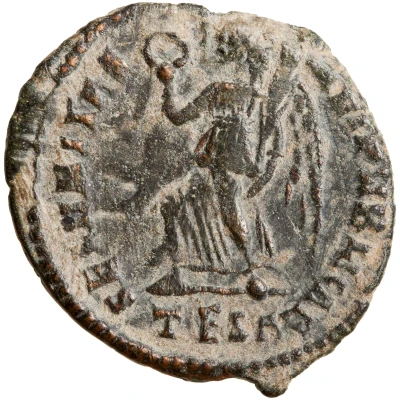

© American Numismatic Society (ANS)
Follis - Valens SECVRITAS REIPVBLICAE; Thessalonica
| Bronze | 2.6 g | 19 mm |
| Issuer | Rome › Roman Empire (27 BC - 395 AD) |
|---|---|
| Emperor | Valens (364-378) |
| Type | Standard circulation coin |
| Years | 364-367 |
| Value | Follis (1⁄180) |
| Currency | Solidus, Reform of Constantine (AD 310/324 – 395) |
| Composition | Bronze |
| Weight | 2.6 g |
| Diameter | 19 mm |
| Shape | Round (irregular) |
| Technique | Hammered |
| Demonetized | Yes |
| Updated | 2024-10-04 |
| Numista | N#97967 |
|---|---|
| Rarity index | 75% |
Reverse
Victory advancing left, holding wreath in right hand and palm in left hand.
Script: Latin
Lettering:
SECVRITAS REIPVBLICAE
TESA
Translation: Securitas Reipublicae: "Safety of the State".
Interesting fact
One interesting fact about the Follis - Valens coin is that it features the first known use of the Christian chi-rho monogram on a Roman coin. The chi-rho monogram, which is a combination of the Greek letters chi (Χ) and rho (Ρ), is a symbol of Christianity that was later adopted as the labarum, or standard, of the Roman Empire under Emperor Constantine. The presence of this symbol on the coin suggests that Christianity was already gaining prominence in the Roman Empire during the reign of Valens (364-367 AD).
